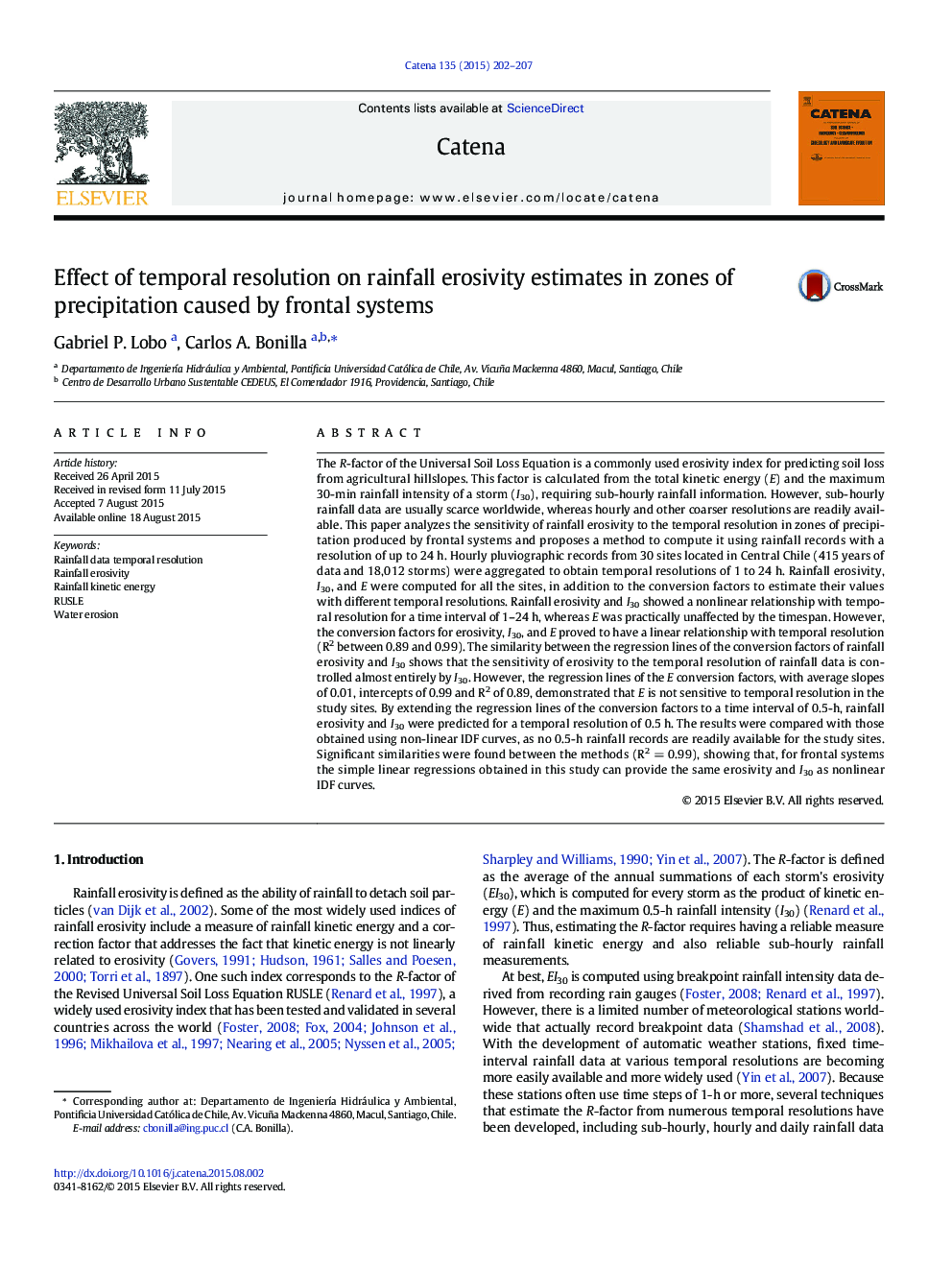| کد مقاله | کد نشریه | سال انتشار | مقاله انگلیسی | نسخه تمام متن |
|---|---|---|---|---|
| 4571092 | 1629217 | 2015 | 6 صفحه PDF | دانلود رایگان |
• Erosivity has a nonlinear relationship with the temporal resolution of the rainfall records.
• The sensitivity of erosivity with temporal resolution is mainly controlled by I30.
• Rainfall kinetic energy is not affected by the temporal resolution of the precipitation data.
• A simple method was developed to estimate erosivity at any temporal resolution.
• The method can also be used to compute I30 from a temporal resolution of 1 to 24 h.
The R-factor of the Universal Soil Loss Equation is a commonly used erosivity index for predicting soil loss from agricultural hillslopes. This factor is calculated from the total kinetic energy (E) and the maximum 30-min rainfall intensity of a storm (I30), requiring sub-hourly rainfall information. However, sub-hourly rainfall data are usually scarce worldwide, whereas hourly and other coarser resolutions are readily available. This paper analyzes the sensitivity of rainfall erosivity to the temporal resolution in zones of precipitation produced by frontal systems and proposes a method to compute it using rainfall records with a resolution of up to 24 h. Hourly pluviographic records from 30 sites located in Central Chile (415 years of data and 18,012 storms) were aggregated to obtain temporal resolutions of 1 to 24 h. Rainfall erosivity, I30, and E were computed for all the sites, in addition to the conversion factors to estimate their values with different temporal resolutions. Rainfall erosivity and I30 showed a nonlinear relationship with temporal resolution for a time interval of 1–24 h, whereas E was practically unaffected by the timespan. However, the conversion factors for erosivity, I30, and E proved to have a linear relationship with temporal resolution (R2 between 0.89 and 0.99). The similarity between the regression lines of the conversion factors of rainfall erosivity and I30 shows that the sensitivity of erosivity to the temporal resolution of rainfall data is controlled almost entirely by I30. However, the regression lines of the E conversion factors, with average slopes of 0.01, intercepts of 0.99 and R2 of 0.89, demonstrated that E is not sensitive to temporal resolution in the study sites. By extending the regression lines of the conversion factors to a time interval of 0.5-h, rainfall erosivity and I30 were predicted for a temporal resolution of 0.5 h. The results were compared with those obtained using non-linear IDF curves, as no 0.5-h rainfall records are readily available for the study sites. Significant similarities were found between the methods (R2 = 0.99), showing that, for frontal systems the simple linear regressions obtained in this study can provide the same erosivity and I30 as nonlinear IDF curves.
Journal: CATENA - Volume 135, December 2015, Pages 202–207
